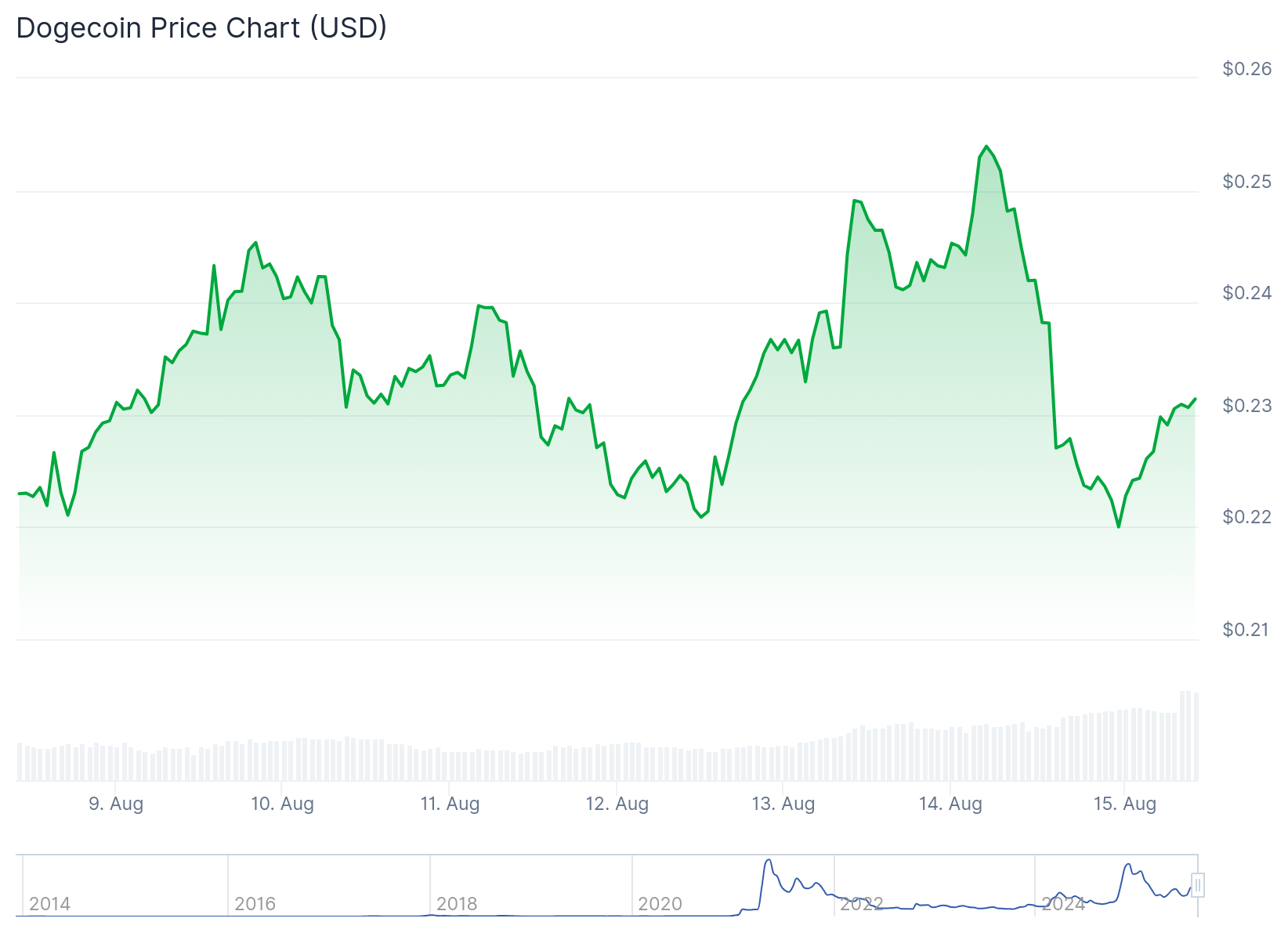TLDR
- Whale addresses accumulated 2 billion DOGE worth $480 million over the past week
- Spot market investors added $32 million in buying pressure for total inflow of $500+ million
- DOGE remains locked between key liquidity zones that could trigger major price moves
- The asset has partly decoupled from Bitcoin and Binance Coin which hit new all-time highs
- Chart analysis shows two-way possibility with whale accumulation hinting at upside potential
Dogecoin is showing signs of a potential breakout after massive whale accumulation over the past week. Large addresses have scooped up 2 billion DOGE tokens worth approximately $480 million during this period.

The buying spree from whale addresses suggests strong expectations for higher prices ahead. These large transactions indicate institutional-level confidence in the meme coin’s prospects.
Spot market investors have also joined the accumulation trend. Exchange netflow data shows an additional $32 million in buying pressure from regular investors.
The combined inflow totals just over $500 million in fresh capital entering Dogecoin markets. This level of sustained buying could set up one of the biggest price moves in recent trading sessions.
However, DOGE has struggled to match the performance of other major cryptocurrencies. The asset has partly decoupled from Bitcoin and Binance Coin, both of which reached new all-time highs recently.
Over the past 24 hours, DOGE fell 3% while other top-10 cryptocurrencies continued gaining momentum. Despite a 27% rise in the past month, the asset has failed to reclaim previous highs.

Chart analysis points to liquidity outflows as the main driver of underperformance. Investors have been selling DOGE holdings while moving capital into BTC and BNB instead.
Historical Performance Shows Divergence
The divergence becomes clear when comparing recent performance periods. Between May 10th and June 22nd, Dogecoin price fell 39% during a broader market correction.
In contrast, Bitcoin dropped just 3.72% during the same timeframe. Binance Coin was down 7.06%, showing much better resilience.
Although all three assets rallied afterward, DOGE’s rebound merely brought it back to break-even levels. Bitcoin and Binance Coin posted much stronger gains during the recovery.
This performance gap reflects the different investor sentiment toward these cryptocurrencies. DOGE faces headwinds that other major tokens have avoided.
The meme coin’s reliance on retail sentiment makes it more volatile during market uncertainty. Institutional preference for Bitcoin and other established tokens has created this performance gap.
Key Liquidity Zones Present Two-Way Risk
Liquidation charts reveal DOGE trading within two major clusters according to market data. These zones represent areas where significant trading activity could occur.
The upper cluster could act as supply, potentially triggering a sell-off if price reaches these levels. This resistance zone contains liquidation orders from traders betting on higher prices.
Conversely, the lower cluster could provide demand support, pushing prices higher if touched. This area contains stop-loss orders from bearish positions that would create buying pressure.

Given the broader market’s bullish momentum and heavy whale accumulation, DOGE appears more likely to trend higher. The fundamental buying pressure from large holders supports an upside bias.
However, a push into the upper liquidity zone could trigger selling before any attempt at new highs. Short-term traders may take profits at these resistance levels.
The whale accumulation data suggests smart money expects higher prices despite current consolidation. These large holders typically have longer time horizons than retail traders.
Transaction activity among whales has also increased alongside the accumulation. The whale transaction count measuring transfers above $1 million has spiked recently.
This combination of accumulation and activity suggests major holders are positioning for a significant move. Whether this materializes depends on broader market conditions and retail participation.





